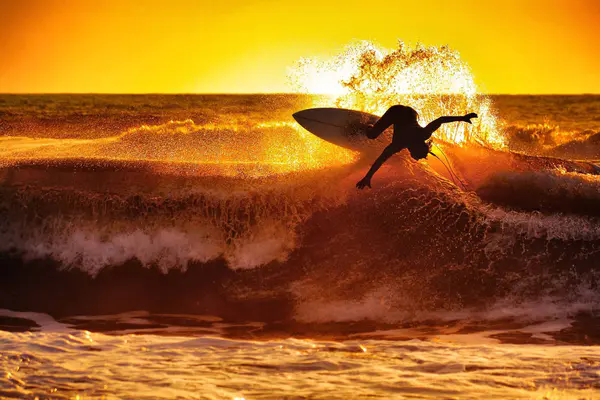Surfing is a dynamic and exciting sport. To surf well, you need to understand various conditions. One key term in surfing is “cross off.” Knowing what cross-off winds are can help you become a better surfer.Surfing is more than just riding waves. It involves understanding the ocean, weather, and wind conditions. These elements can significantly impact your surfing experience. Among these, wind plays a crucial role. Wind can either make your surfing session enjoyable or challenging.
Types of Winds in Surfing
There are three main types of winds in surfing:
- Onshore Winds
- Offshore Winds
- Cross-shore Winds
Each wind type affects waves differently. Let’s explore these winds in detail.
Onshore Winds
Onshore winds blow from the ocean towards the shore. These winds push waves towards the beach. Onshore winds can create choppy and less desirable waves. Surfing in onshore winds can be challenging.
Offshore Winds
Offshore winds blow from the land towards the ocean. These winds hold the waves up and create clean, well-formed waves. Offshore winds are ideal for surfing. They make waves smooth and easier to ride.
Cross-shore Winds
Cross-shore winds blow parallel to the shore. These winds can be tricky. They can make waves unpredictable. However, they can also create unique surfing opportunities.
Understanding Cross-Off Winds
Cross-off winds are a combination of offshore and cross-shore winds. They blow at an angle from the land towards the ocean. This angle is not directly offshore but not fully cross-shore either. Cross-off winds can vary in intensity and direction.
Characteristics of Cross-Off Winds
Cross-off winds have specific characteristics:
- Angle: They blow at an angle between 30 to 60 degrees from the shore.
- Direction: They come from the land and head towards the ocean.
- Impact on Waves: They create clean waves with some side texture.
How Cross-Off Winds Affect Surfing
Cross-off winds can significantly influence surfing conditions:
- Wave Shape: They help form clean, well-shaped waves.
- Wave Texture: They can add a slight texture to the waves, making them interesting to ride.
- Consistency: They can create more consistent waves compared to cross-shore winds.
Advantages of Cross-Off Winds
Surfing in cross-off winds has several advantages:
- Better Wave Formation: These winds help create better wave shapes.
- Smoother Rides: They make the waves smoother and more enjoyable.
- Increased Stability: They provide increased wave stability compared to onshore winds.
Challenges of Cross-Off Winds
Despite their advantages, cross-off winds can also present challenges:
- Variable Conditions: The angle of the wind can create variable conditions.
- Skill Requirement: Surfing in cross-off winds requires more skill and experience.
- Wave Texture: The added texture can be tricky for beginners.
Analyzing Surf Spots for Cross-Off Winds
Not all surf spots are ideal for cross-off winds. It’s essential to analyze surf spots for these conditions.
Ideal Surf Spots for Cross-Off Winds
Some surf spots are perfect for cross-off winds:
- Point Breaks: Point breaks can handle cross-off winds well.
- Reef Breaks: Reef breaks can create excellent waves with cross-off winds.
- Beach Breaks: Some beach breaks can also work well with cross-off winds.
Factors to Consider
When analyzing surf spots, consider the following factors:
- Wind Direction: Ensure the wind direction is suitable for the spot.
- Wave Type: Check if the wave type can handle cross-off winds.
- Local Knowledge: Rely on local knowledge and surf reports.
See Also: What Is a Kook in Surfing Terms
Preparing for Surfing in Cross-Off Winds
Preparation is key to surfing in cross-off winds. Here are some tips to help you prepare:
Equipment
Having the right equipment is crucial:
- Board Type: Choose a board suitable for the conditions.
- Wetsuit: Wear a wetsuit if the water is cold.
- Leash: Always use a leash for safety.
Skills and Techniques
Improving your skills and techniques can enhance your experience:
- Paddling: Improve your paddling technique for better wave entry.
- Positioning: Position yourself correctly on the wave.
- Turns: Practice your turns to handle the wave texture.
Safety Measures
Safety is always a priority:
- Check Conditions: Always check the surf conditions before heading out.
- Surf with a Buddy: Surfing with a buddy enhances safety.
- Know Your Limits: Be aware of your skill level and know when to call it a day.
Surfing in Cross-Off Winds
Analyzing case studies can provide valuable insights. Here are a few examples:
- California’s Point Breaks: California’s point breaks are famous for cross-off winds. Surfers here enjoy clean, well-formed waves. The consistency and quality of waves make it a popular spot.
- Hawaii’s Reef Breaks: Hawaii’s reef breaks can handle cross-off winds well. The waves here are powerful and clean. Surfers need to be skilled to handle these conditions.
- Australia’s Beach Breaks: Australia’s beach breaks can also benefit from cross-off winds. These spots offer a variety of waves suitable for different skill levels.
Conclusion
Understanding cross-off winds is essential for surfers. These winds create unique and enjoyable surfing conditions. By analyzing surf spots and preparing adequately, you can make the most of cross-off winds. Always prioritize safety and continuously improve your skills. Happy surfing!

